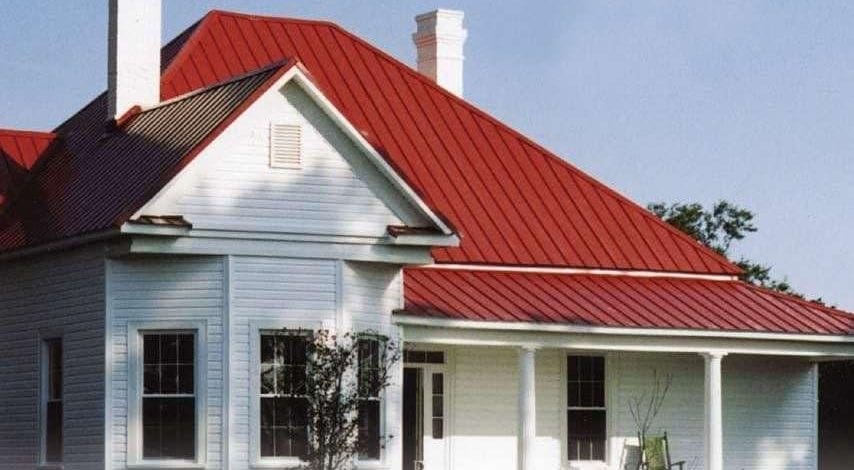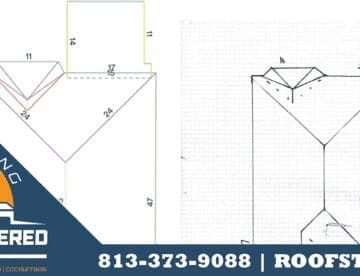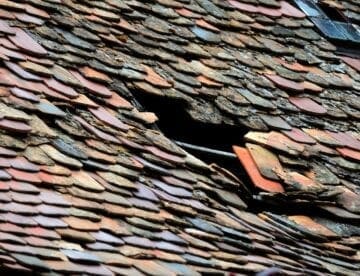Need a new roof? Then you’ve probably heard of the Cadillac of roofing materials – metal. But the word “metal” when it comes to roofing materials refers to several different types of metal roofs. When a customer says they want a metal roof, that doesn’t even begin to cover the kind of material they want, if they even know yet. In this article, we’ll list the top five different types of metal roofs so you can choose a material that works for your home and your pocketbook.
Steel Metal Roofs
Steel is the most popular roofing material in the U.S. Why is it so popular? For a couple of reasons. First of all, steel is the least expensive metal roofing material you can have installed. The different subtypes of steel roofing materials are ideal for a range of climates and weather patterns. Also, it’s one of the most environmentally-friendly roof types.
When it comes to commercial construction, steel is one of the most common materials you can find on a construction site. As an alloy, steel is made out of primarily iron, and a few other elements. You’ll also frequently find steel as part of residential architecture, too. Creating steel, at first, is an energy-intensive process compared to other metal roofing materials, like zinc. But steel is widely available and also recyclable.
If you wish to have a steel roof installed, you’ll need to know the three primary types of steel roofs:
- Galvalume Steel
Galvalume steel uses a combination of aluminum and zinc coating. An aluminum coating gives the roof a high level of protection against corrosion. While galvalume steel offers excellent protection against corrosion, the material is prone to scratches.
- Galvanized Steel
With galvanized steel, the material is given a coating of zinc to protect the inner steel layers from corrosion. Galvanized steel is the most common form of steel roofing material you’ll see.
- Weathering Steel
Weathering steel roofing material was first used in heavy construction, like bridge design. A weathering steel roof will have several layers of steel incorporated in the design, making it a strong, durable material.
Tin Roofing
People often call a metal roof a “tin roof,” but the term is misleading. A tin roof is its own unique material, but a true tin roof is incredibly rare, and they aren’t installed anymore. Like copper and zinc, tin is a separate element and was initially used as a canning material.
In the 19th century, tin was used as a DIY measure for roofing buildings, when stronger metals were unavailable. Once aluminum replaced tin as a canning material, tin as roofing material went the way of the dodo. If you hear someone call their new metal roof a “tin roof,” what they really mean either galvanized steel or aluminum.
Aluminum Roofs
An aluminum metal roof is an ideal material for buildings that are in coastal areas because aluminum is highly resistant to salt corrosion. People often mistake aluminum metal roofing as impervious to atmospheric conditions, and therefore, not susceptible to corrosion. But that’s not technically true.
In actuality, aluminum is an extremely reactive material. It will rapidly react to oxygen in the air, which creates a layer of aluminum oxide on the outer surface of the roof. Aluminum oxide seals off the inner layers of the roof from corrosive elements and conditions.
Aluminum roofs are often painted with an additional protective coating since the natural patina of an aluminum roof is often considered unappealing. The biggest downside to aluminum is that it’s pricier than the other materials on this list, like steel. Even steel roofs coated with aluminum are less expensive than a pure aluminum roof.
Because of the cost of aluminum, it is often sold in sheets that are thinner than less expensive roofing materials. For this reason, it’s critical to identify and implement the right design and strains of aluminum in a roof installation job. In regions with high winds or hail, thin aluminum roofs won’t last long.
Copper Roofing Material
Copper is the oldest metal roofing material used in the U.S. Copper roofs are also 100% recyclable, so they are a green option. Plus, copper roofs can handle a range of environmental conditions and can last for up to 200 years.
Soft metals like copper are also a quiet metal. But that also makes it more susceptible to damage if hail storms are a likely occurrence where you live. While most roofing materials will become dented from hail, a copper roof could become punctured – a much bigger problem.
Copper is also expensive, and highly prone to expansion and contraction during the freeze/thaw cycle. Proper paneling can reduce the likelihood of expansion and contraction, but it’s something to consider if you want a copper roof.
Zinc Roofs
Zinc roofs can last for 100 years. A big plus to having a zinc roof installed is that the material forms a natural patina throughout its lifespan. This patina can almost “heal” the roof and reduce the appearance of scratches over time. Zinc is also easily formed into different shapes, making it an ideal roofing material for commercial buildings especially.
Another beneficial aspect of using zinc is that it requires a lower melting point for shaping and forming than other roofing materials. It’s also 100% recyclable, so it is an incredibly green roofing material. What’s the major downside of zinc?
It chalks. Zinc chalking is often considered aesthetically unappealing, although it can be cleaned and prevented, at least to an extent. It’s also a more expensive roofing material and is usually priced within a similar range to copper roofs. It’s also a soft material, so it’s not the best metal to use in areas that see frequent hail storms.
Choosing Between the Different Types of Metal Roofs: A Takeaway Message
Metal roofs are some of the longest-lasting, durable, and environmentally-friendly roofing materials in existence. When choosing a metal roof for your home or commercial business, cost and aesthetics are just two of the factors you’ll want to consider. Seasonal weather patterns and climate will also play a significant role in your final decision.
Are you in the market for a new roof? Contact us today for a free, no-obligation quote on a new metal roof.




